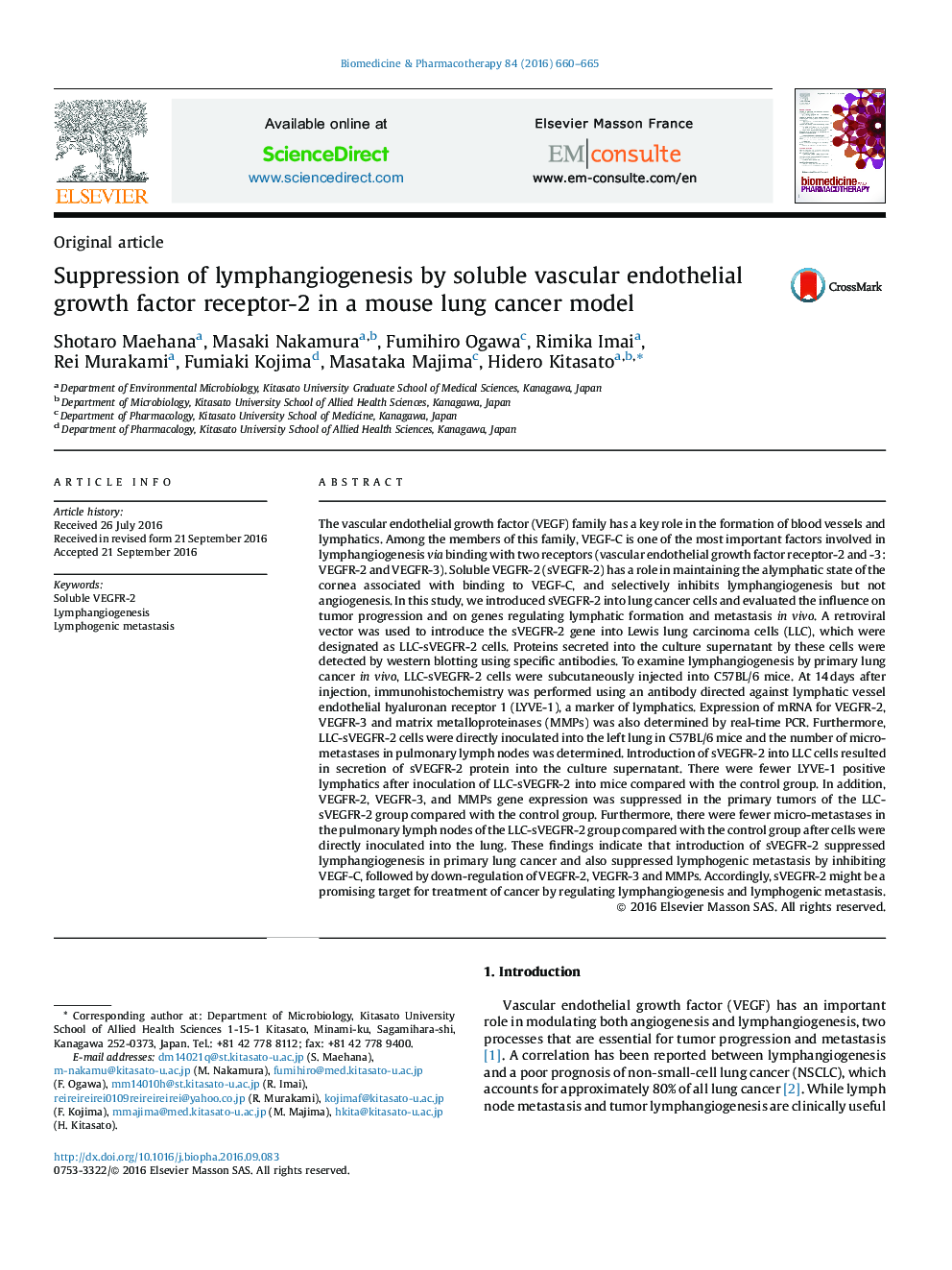| کد مقاله | کد نشریه | سال انتشار | مقاله انگلیسی | نسخه تمام متن |
|---|---|---|---|---|
| 5553404 | 1557958 | 2016 | 6 صفحه PDF | دانلود رایگان |
The vascular endothelial growth factor (VEGF) family has a key role in the formation of blood vessels and lymphatics. Among the members of this family, VEGF-C is one of the most important factors involved in lymphangiogenesis via binding with two receptors (vascular endothelial growth factor receptor-2 and -3: VEGFR-2 and VEGFR-3). Soluble VEGFR-2 (sVEGFR-2) has a role in maintaining the alymphatic state of the cornea associated with binding to VEGF-C, and selectively inhibits lymphangiogenesis but not angiogenesis. In this study, we introduced sVEGFR-2 into lung cancer cells and evaluated the influence on tumor progression and on genes regulating lymphatic formation and metastasis in vivo. A retroviral vector was used to introduce the sVEGFR-2 gene into Lewis lung carcinoma cells (LLC), which were designated as LLC-sVEGFR-2 cells. Proteins secreted into the culture supernatant by these cells were detected by western blotting using specific antibodies. To examine lymphangiogenesis by primary lung cancer in vivo, LLC-sVEGFR-2 cells were subcutaneously injected into C57BL/6 mice. At 14Â days after injection, immunohistochemistry was performed using an antibody directed against lymphatic vessel endothelial hyaluronan receptor 1 (LYVE-1), a marker of lymphatics. Expression of mRNA for VEGFR-2, VEGFR-3 and matrix metalloproteinases (MMPs) was also determined by real-time PCR. Furthermore, LLC-sVEGFR-2 cells were directly inoculated into the left lung in C57BL/6 mice and the number of micro-metastases in pulmonary lymph nodes was determined. Introduction of sVEGFR-2 into LLC cells resulted in secretion of sVEGFR-2 protein into the culture supernatant. There were fewer LYVE-1 positive lymphatics after inoculation of LLC-sVEGFR-2 into mice compared with the control group. In addition, VEGFR-2, VEGFR-3, and MMPs gene expression was suppressed in the primary tumors of the LLC-sVEGFR-2 group compared with the control group. Furthermore, there were fewer micro-metastases in the pulmonary lymph nodes of the LLC-sVEGFR-2 group compared with the control group after cells were directly inoculated into the lung. These findings indicate that introduction of sVEGFR-2 suppressed lymphangiogenesis in primary lung cancer and also suppressed lymphogenic metastasis by inhibiting VEGF-C, followed by down-regulation of VEGFR-2, VEGFR-3 and MMPs. Accordingly, sVEGFR-2 might be a promising target for treatment of cancer by regulating lymphangiogenesis and lymphogenic metastasis.
Journal: Biomedicine & Pharmacotherapy - Volume 84, December 2016, Pages 660-665
